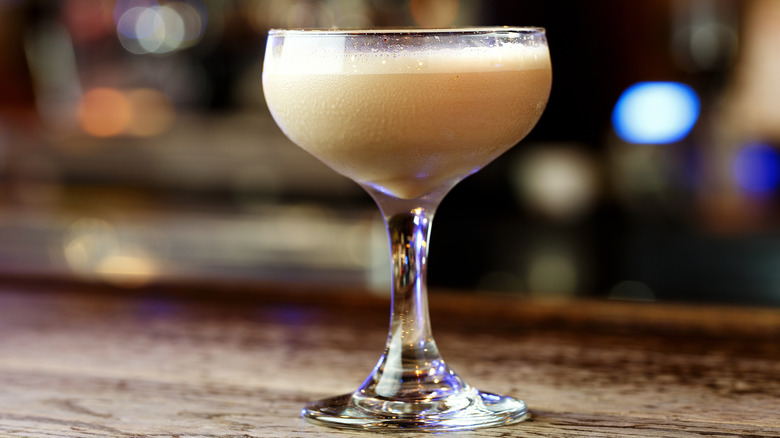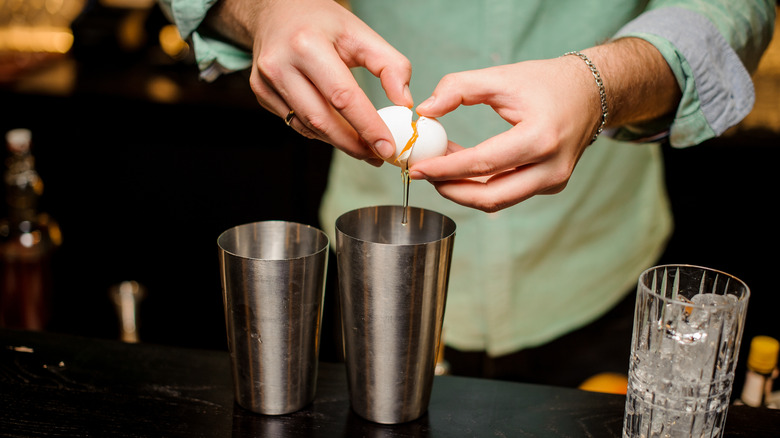Porto Flip: A Textured Cocktail That Requires An Entire Egg
Those who like a bit of texture in a cocktail have likely crossed bar paths with a Porto Flip. It's rich and creamy with a velvety mouthfeel and frothy topping. There's plenty to love about that — unless you're not a fan of raw egg in a glass. That's exactly what gives a Porto Flip that extra textural oomph, enhanced by elegant accompanying ingredients such as port and brandy. In a flip cocktail, unlike other eggy concoctions, it's not the egg white or the yolk alone, but the entire egg. Depending on who's working the flip magic, it can also include heavy cream and even tasty surprises such as a drop of Chartreuse.
Flip cocktails are nothing new, dating back to at least pre-Prohibition days in America. However, the concept of using a whole raw egg in flip-style drinks is apparently much older, dating back to the 1600s with swarthy tales of sailors on the high seas mixing a whole egg with molasses, ale, and rum. The ale is figuratively lost at sea now, with most flip cocktails calling for, in addition to the whole raw egg, ingredients ranging from Irish whiskey and cream to rye whiskey, vermouth, rum, sherry, and more.
In the case of the Porto Flip, it's brandy — sometimes upgraded to cognac — and rich port wine. Traditionally, the port is a tawny light-brown one for nutty nuance, but it can be upgraded to a ruby-red port for fruity essence.
Technique matters
Achieving the smooth texture, body, and warm finish of an expertly crafted Porto Flip requires an understanding of technique. A frothy topping, which holds a sprinkle of nutmeg, is as important as the creamy body texture, so the shaking method matters. To get the froth while also fully emulsifying the raw egg with the spirits and other ingredients, the flip needs a dry shake without ice. A second shake with added ice adds the refreshing chill factor.
Making a flip follows a similar process as its egg-based cocktail counterparts: the sours and the fizzes. The difference lies in how they embrace the egg. Sours, including the ever-embraced whiskey sour, eschew the yolk and employ only the egg white. The frothy delight comes from shaking, which whips air into the egg white, similar to how a dessert chef makes meringue in a bowl. Fizz cocktails also use the egg white and not the yolk, but they come with carbonated water such as club soda or seltzer, creating fizzy effervescence in the glass.
Neither a sour nor a fizz cocktail will absorb much flavor from the egg since it's just the white portion. A flip cocktail, including the Porto Flip, pulls some nuance from the yolk portion of the whole egg, resulting in a rich taste infusion similar to eggnog.

